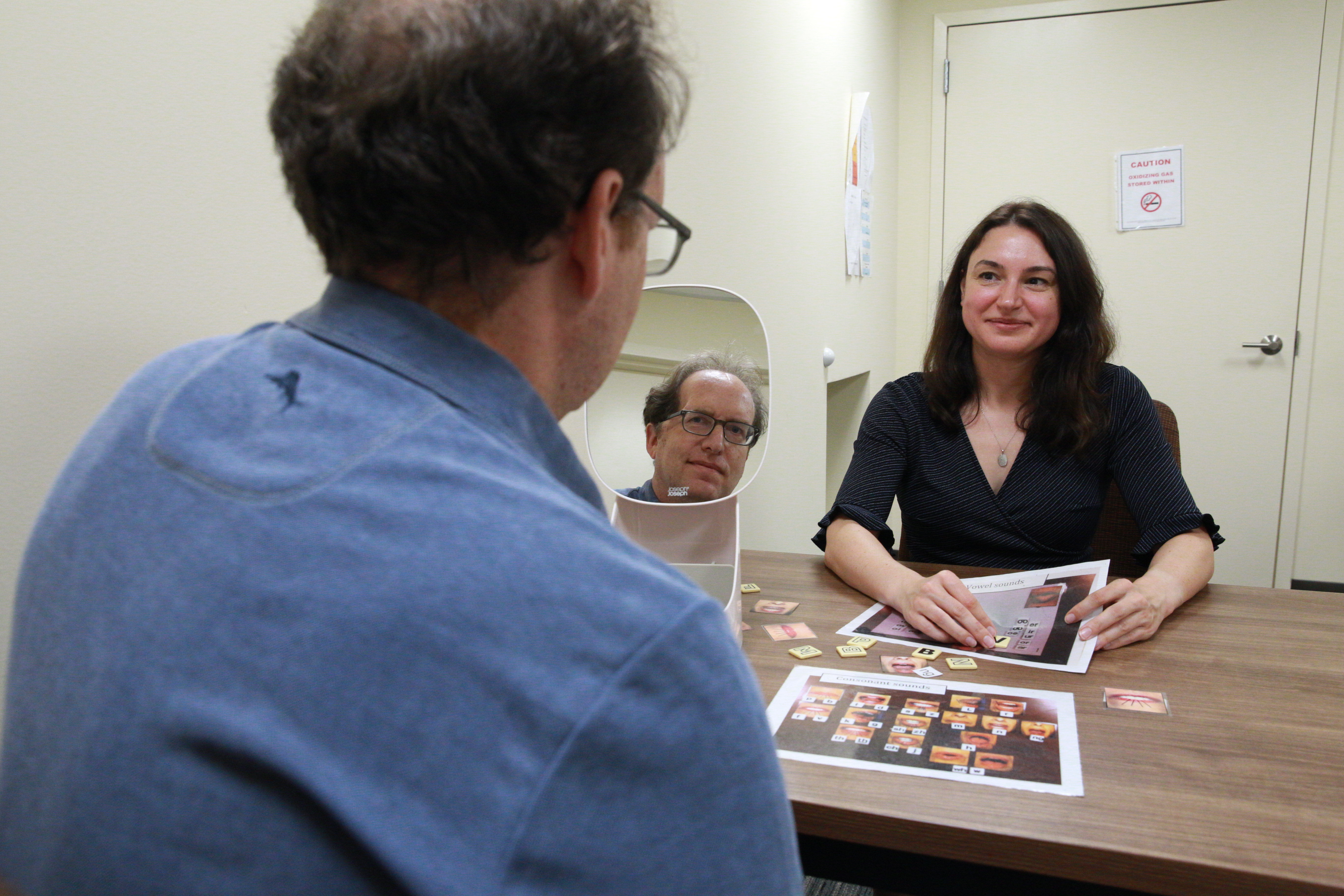A New Frontier in Neurorehabilitation
"How the brain processes language has always fascinated me,” says Olga Boukrina, PhD, senior research scientist in the Center for Stroke Rehabilitation Research at Kessler Foundation. “The ways we use language in our daily lives—speaking, writing, reading, understanding—often seem effortless, but these abilities depend on complex interactions among many areas of the brain,” she explains. “When a stroke occurs, a person may lose some of their language abilities depending on which areas of the brain are affected—a condition we call aphasia. Many people with aphasia have lost their ability to read.”

Despite the devastating consequences for people striving to recover from stroke, reading impairment is understudied. “Failing to regain the ability to read adversely affects quality of life for stroke survivors,” says Dr. Boukrina.“Hundreds of thousands of strokes occur every year, and each day, the number of people with reading deficits increases. Clearly, the need for early and effective treatment after stroke is urgent,” she stresses, “which is why I focus my research on ways to restore the ability to read.”
With your support, Dr. Boukrina is expanding our knowledge of reading deficits. “First, we identified the decreased brain activity and blood flow patterns associated with poor recovery of reading ability. Now, we are testing ways to stimulate brain activity and increase blood flow, to help people regain their ability to read.”
Using functional neuroimaging, Dr. Boukrina observes what happens in the brain in real time. In one novel study, individuals recovering from left-sided stroke undergo a brain MRI during which they practice a mental strategy to stimulate activity in the intact parts of their left hemisphere. Imagining finger tapping of their right hand stimulates activity and blood flow to the left side of their brain, and, in particular, to areas important for translating visual symbols to speech. This mental imagery task is followed by another: reading a list of words during which real-time neuroimaging data are used to provide participants with neurofeedback, helping them learn how to best activate the brain areas used for reading. “Training people to regulate their own brain activity is an exciting new approach to stroke rehabilitation that we are just beginning to explore,” Dr. Boukrina says.
Knowing that increased neural activity and cerebral blood flow seen on MRI images lead to improved cognitive function, a new study adds exercise to boost blood flow. Dr. Boukrina is collaborating with Brian M. Sandroff, PhD, senior research scientist in the Center for Neuropsychology and Neuroscience Research at Kessler Foundation, to combine a targeted reading treatment with aerobic exercise training to enhance the beneficial effects on reading. Dr. Sandroff, an expert in exercise neurorehabilitation, has conducted similar studies in other populations with cognitive deficits, including multiple sclerosis and traumatic brain injury, and results have been promising.
The team will compare two groups of individuals with left-sided stroke and reading impairment. One group will perform 20 minutes of cycling exercise prior to their neuroimaging and reading session; the other will perform light stretching. “We anticipate that the exercise group will have greater gains from their reading treatment due to greater increases in blood flow to the brain,” predicts Dr. Sandroff.
Preliminary findings are encouraging, showing that participants increased the accuracy and speed of reading. If the results are positive, this evidence would be the first of its kind—an important advance in the field of reading research, concludes Dr. Boukrina. “Effective treatments that are grounded in stroke biology could radically change how we treat people with reading impairment and fundamentally alter our view of recovery and stroke. We thank our donors for making this research possible,” they conclude.